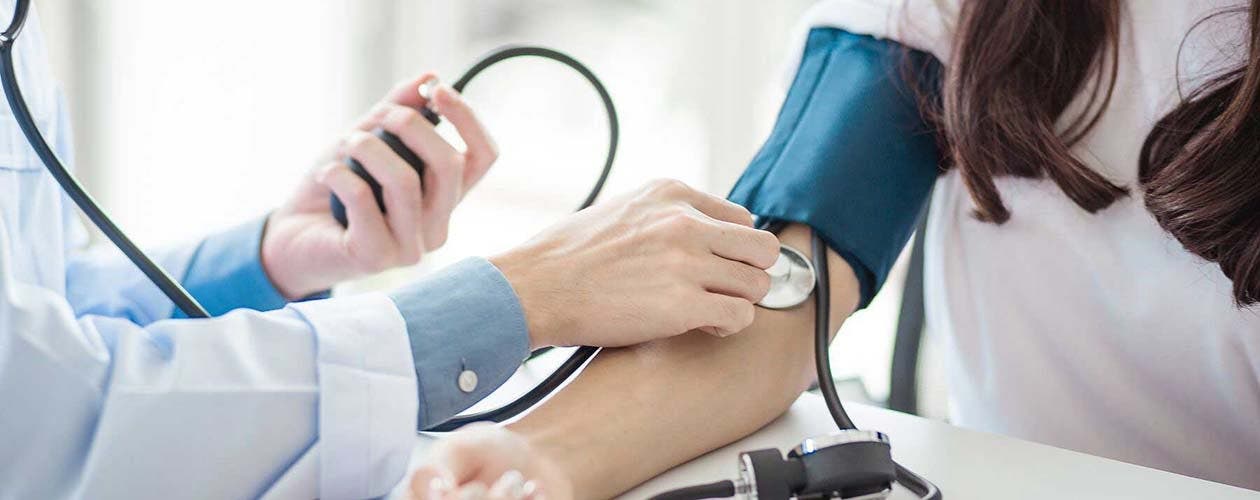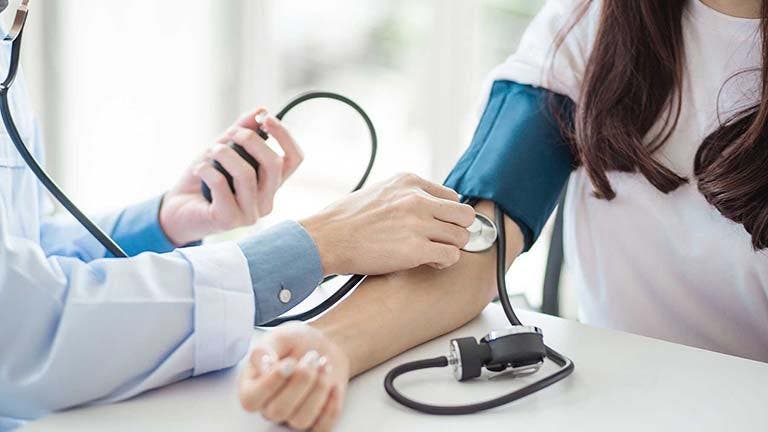Here’s what you need to know about high blood pressure


Do you Know Your Numbers?
Between 6-12th September 2021 it's Know Your Numbers Week, which is the UK's biggest blood pressure testing and awareness event.
Know Your Numbers Week reaches people who have high blood pressure and don’t know it, so they can get the treatment and support they need to bring it under control.
As well as raising awareness of the risks of high blood pressure, this annual campaign encourages the nation to use a simple and reliable blood pressure monitor to measure their blood pressure at home.
Home monitoring simultaneously lets you take control of your health and take the pressure off the NHS. It's a practical way to Know Your Numbers without visiting your GP or pharmacist, and it really can save lives.
Everything you need to know about high blood pressure
 Ravi Assi is a qualified in-house doctor at WW UK. Here's what he has to say about high blood pressure:
Ravi Assi is a qualified in-house doctor at WW UK. Here's what he has to say about high blood pressure:
"High blood pressure affects more than 1 in 4 adults in the UK. However, millions of cases are thought to be undiagnosed and therefore go untreated because there are rarely any symptoms.
"Having high blood pressure can significantly increase your risk of developing conditions such as heart attack, stroke, kidney failure...the list is endless. In fact, high blood pressure is the third biggest risk factor for disease after tobacco smoking and poor diet. According to Public Health Matters, high blood pressure costs the NHS £2.1 billion a year.
"Early detection is vital. I've seen the impact hypertension can have on people's lives - I've even seen it on a personal level - and it emphasises the importance of regular blood pressure checks and detecting high blood pressure early. According to Blood Pressure UK, 350 people have a stroke or heart attack that could have been prevented every single day in the UK. On a global scale, over 10 million lives are lost each year needlessly due to raised blood pressure, according to the International Society of Hypertension.
"Blood pressure monitors are one of the best tools to keep track of your blood pressure readings, so I would strongly advocate using them."
What is high blood pressure?
High blood pressure happens when blood is forced through the vessels at an increased pressure. The medical term for this is hypertension.
What does a blood pressure reading look like? What’s considered ‘normal’?
A blood pressure reading has two numbers:
- A top number known as systolic pressure - when the heart muscle contracts and pumps blood from the chambers into the arteries
- A bottom number, known as diastolic pressure - when the heart muscle relaxes and allows the chambers to fill with blood
Blood pressure is measured in mmHG, or ‘millimetres of mercury’. Ideal blood pressure is usually considered to be between 90/60 and 120/80. The National Institute for Health and Care Excellence (NICE) defines high blood pressure as a clinic blood pressure of 140/90 or higher.
Blood pressure readings between 120/80mmHg and 140/90mmHg could mean you're at risk of developing high blood pressure if you do not take steps to keep your blood pressure under control.
It’s important to note that everyone’s blood pressure is slightly different - what’s considered low or high for you may be normal for someone else.
What causes high blood pressure?
You’re at an increased risk of high blood pressure if you’re over the age of 65, have a relative with high blood pressure or are of African or Caribbean descent. Your lifestyle can also impact your risk: if you’re overweight, smoke, consume too much salt, drink too much alcohol or caffeine, don’t do enough exercise, don’t get enough sleep or experience high levels of stress, you could also have an increased risk.
High blood pressure doesn’t just happen to older adults. Over 2.1 million people under the age of 45 had high blood pressure in England in 2015, but because there are rarely any noticeable symptoms, many may not realise. The only way to find out if you have high blood pressure is to have your blood pressure checked.
The risks of high blood pressure
High blood pressure puts additional strain on the blood vessels, heart and other organs like the brain, eyes and kidneys. If left untreated, persistent high blood pressure increases the risk of serious problems such as heart attacks, heart disease, heart failure, strokes, peripheral arterial disease, aortic aneurysms, kidney disease and vascular dementia.
Reducing your blood pressure even by a small amount can help lower your risk of developing these health conditions.
How can I improve my blood pressure readings?
Healthy lifestyle changes and/or medication can help lower blood pressure if it's already high, and reduce your chances of developing high blood pressure. Healthy lifestyle changes may include:
- Losing weight, if you’re overweight
- Exercising regularly
- Reducing the amount of salt you eat, and enjoying a generally healthy diet
- Cutting back on alcohol
- Cutting down on caffeine
- Stopping smoking
Some people with high blood pressure may also need to be prescribed medicine. We recommend making an appointment with your GP to determine the best course of treatment for you.
Dr Ravi’s top tips for lowering blood pressure
“In addition to losing weight and moving more, reducing salt intake can have a beneficial effect on reducing blood pressure, but this is commonly overlooked by many people. Natural salt is in all the foods we consume, but approximately 75-80% comes directly from eating processed foods. The recommended intake of salt per day is 6g (approximately 1tsp).
“To help reduce the amount of salt in your diet, try these tips:
- Avoid adding salt to food before or after cooking
- Rather than using low sodium salt alternatives, try flavouring foods with herbs, spices, pepper, lemon juice or vinegar
- Enrich your diet with fruit and vegetables. They are naturally low in salt, and having at least five portions of fruit or vegetables a day has been shown to reduce blood pressure
- Try to cook freshly prepared meals, and avoid too many convenience foods
“Always read food labels, and look for the amount of salt (often labelled sodium) per 100g. Watch out for foods with more than 1.5g salt (0.6g sodium) per 100g - these may be colour-coded red. Try to include foods in your diet with 0.3g salt (0.1g sodium) or less per 100g - these foods may be colour-coded green.
"I also recommend getting active. While physical activity may cause a rise in your blood pressure during and immediately afterwards, in the longer term it can reduce your blood pressure. In fact, becoming more active can lower your systolic blood pressure by an average of 4-9mmHg - that's as good as some blood pressure medications. For some people, being active is enough to reduce the need for blood pressure medication. The NHS recommends 150 minutes of moderate intensity activity per week."
Build healthy habits with WW
Our customised weight loss programme puts simple and effective tools at your fingertips to help you achieve a healthy weight. Being at a healthy weight can help reduce your blood pressure, or reduce your risk of developing high blood pressure.
When you become a member, you’ll get a personalised daily Points® Budget, which will guide you towards healthier food choices.
